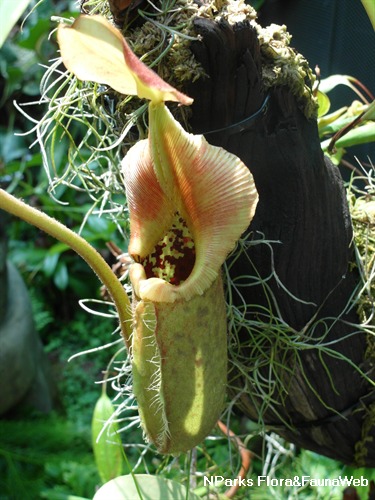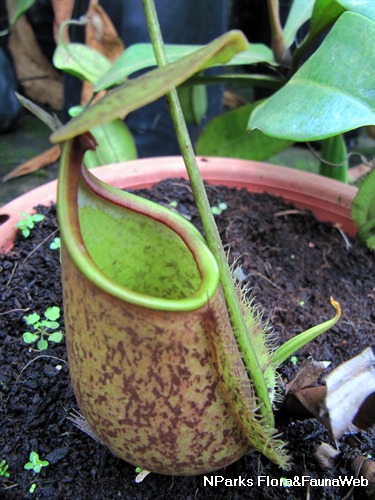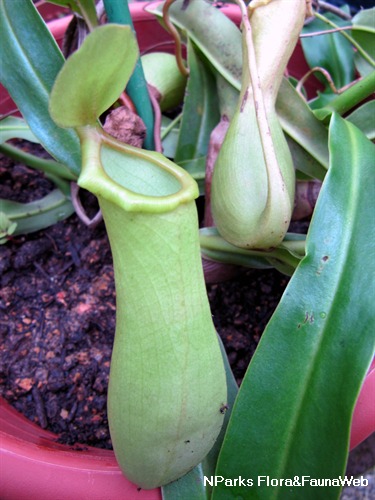.jpg)
Back
Nepenthes bicalcarata Hook.f.
| Family Name: | Nepenthaceae |
| Common Name: | Fanged Pitcher Plant |
Nepenthes bicalcarata is a pitcher plant with two sharp thorns hanging downwards from the pitcher lid, resembling fangs. This tropical climber can grow up to 15 m tall, and found growing in peat-swamp forests in Borneo.
Name
Classifications and Characteristics
| Plant Division | Angiosperms (Flowering Seed Plants) (Monocotyledon) |
|---|---|
| Plant Growth Form | Climber |
| Lifespan (in Singapore) | Perennial |
| Mode of Nutrition | Heterotrophic (Insectivorous / Carnivorous) |
| Maximum Height | 15 m |
Biogeography
| Native Distribution | Borneo |
|---|---|
| Native Habitat | Terrestrial |
| Preferred Climate Zone | Tropical |
Description and Ethnobotany
| Growth Form | Large pitcher plant climbing to a height of 15 m |
|---|---|
| Foliage | Leaves obovate-lanceolate up to 65 cm long by 14 cm wide, petioles (leaf stalks) up to 12cm long. The pitchers are modified parts of the leaves, they are greenish orange. The peristome (the collar around the opening) is green. The pitcher's lid is yellowish on the upper surface and has deep red or purple pattern on the under surface. Lower pitchers are up to 13 cm long by 6.5 cm wide with two fringed wings and swollen tendrils of 12 mm thick. Upper pitchers are up to 13 cm long by 6 cm wide with two ribs and lips of up to 4 cm x 10 cm, the tendrils are once-coiled. |
| Stems | Circular stems about 2 cm in diameter. |
| Flowers | Two separate male and female inflorescences with male flowers deep purple to blackish, up to 15 flowers on an inflorecence of up to 1 m long. The female inflorescences are shorter than male inflorescences. |
| Fruit | Capsules. No seeds are recorded. |
| Habitat | Found in peat-swamp forests. |
| Etymology | The specific epithet bicalcarata is derived from the Latin which means two-spurred, with reference to the 2 fang-like structures on the pitcher's lid. |
Landscaping Features
| Landscaping | A tropical climber that has fanged pitchers making it a great ornamental addition in tropical landscape. |
|---|---|
| Desirable Plant Features | Ornamental Foliage |
| Landscape Uses | Small Gardens, Container Planting, Suitable for Hanging Baskets |
Fauna, Pollination and Dispersal
| Pollination Method(s) | Biotic (Fauna) (Insects (Ant, Beetle, Fly, Thrip, Wasp)) |
|---|---|
| Seed or Spore Dispersal | Abiotic |
Plant Care and Propagation
| Light Preference | Full Sun, Semi-Shade |
|---|---|
| Water Preference | Lots of Water, Moderate Water, Occasional Misting |
| Plant Growth Rate | Moderate |
| Rootzone Tolerance | Moist Soils, Well-Drained Soils, Easy to Grow |
| Pest(s) | Sucking Insects |
| Propagation Method | Seed, Stem Cutting |
Foliar
| Foliage Retention | Evergreen |
|---|---|
| Mature Foliage Colour(s) | Green |
| Mature Foliage Texture(s) | Glossy / Shiny, Thin |
| Prominent Young Flush Colour(s) | Green |
| Foliar Modification | Pitcher Trap |
| Foliar Type | Simple / Unifoliate |
| Foliar Arrangement Along Stem | Spiral |
| Foliar Attachment to Stem | Petiolate |
| Foliar Shape(s) | Non-Palm Foliage (Lanceolate) |
| Foliar Margin | Entire |
Non - Foliar and Storage
| Stem Type & Modification | Climbing Tendril |
|---|---|
| Root Type | Underground |
Floral (Angiosperm)
| Flower & Plant Sexuality | Unisexual Flowers , Dioecious |
| Flower Colour(s) | Purple, Black |
|---|
| Flower Grouping | Cluster / Inflorescence |
| Flower Symmetry | Radial |
| Individual Flower Shape | Stellate / Star-shaped |
| Inflorescence Type | Panicle |
| Flowering Habit | Polycarpic |
| Flower Size | 5 mm x 4 mm |
| Inflorescence Size | 1 m |
Fruit, Seed and Spore
| Fruit Classification | Simple Fruit |
|---|---|
| Fruit Type | Indehiscent Dry Fruit , Capsule |
| Seed Description | Not recorded |
Image Repository
Others
| Master ID | 30166 |
|---|---|
| Species ID | 4475 |
| Flora Disclaimer | The information in this website has been compiled from reliable sources, such as reference works on medicinal plants. It is not a substitute for medical advice or treatment and NParks does not purport to provide any medical advice. Readers should always consult his/her physician before using or consuming a plant for medicinal purposes. |

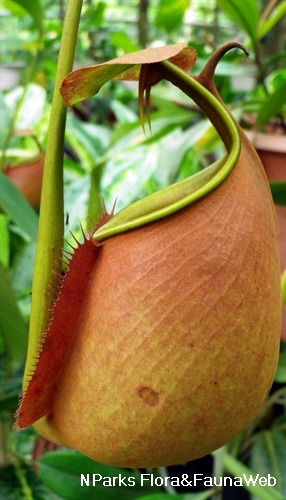
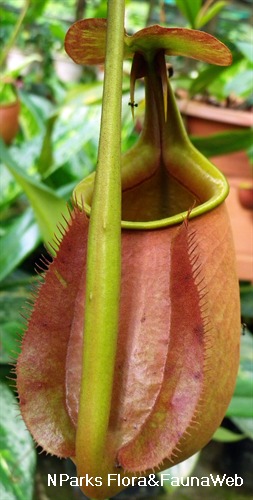
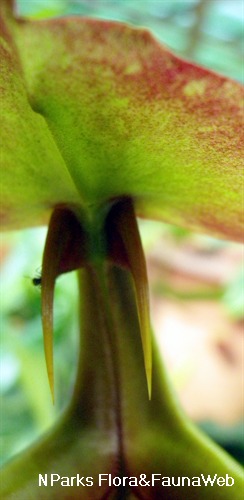
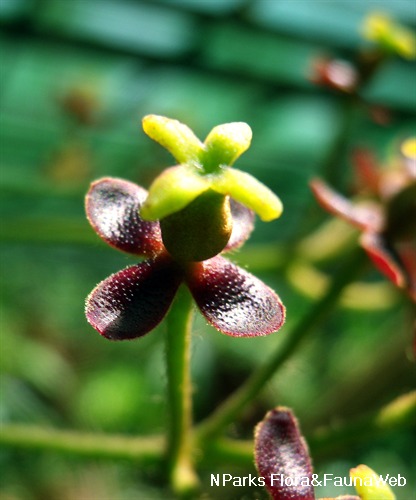
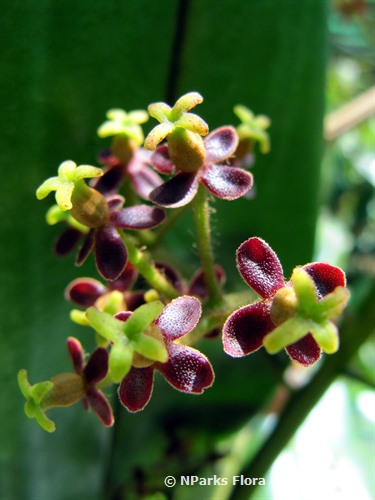
.jpg)
